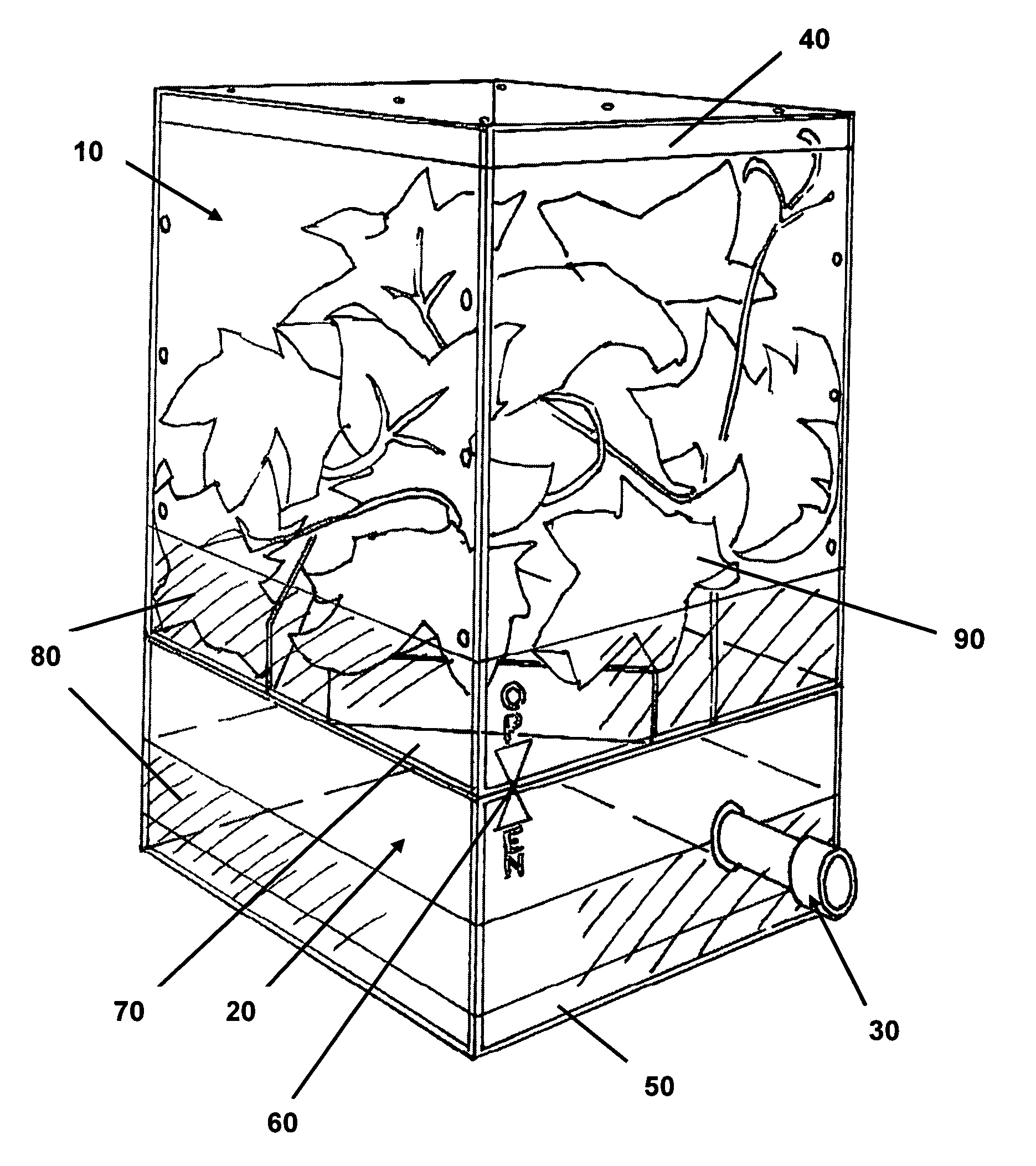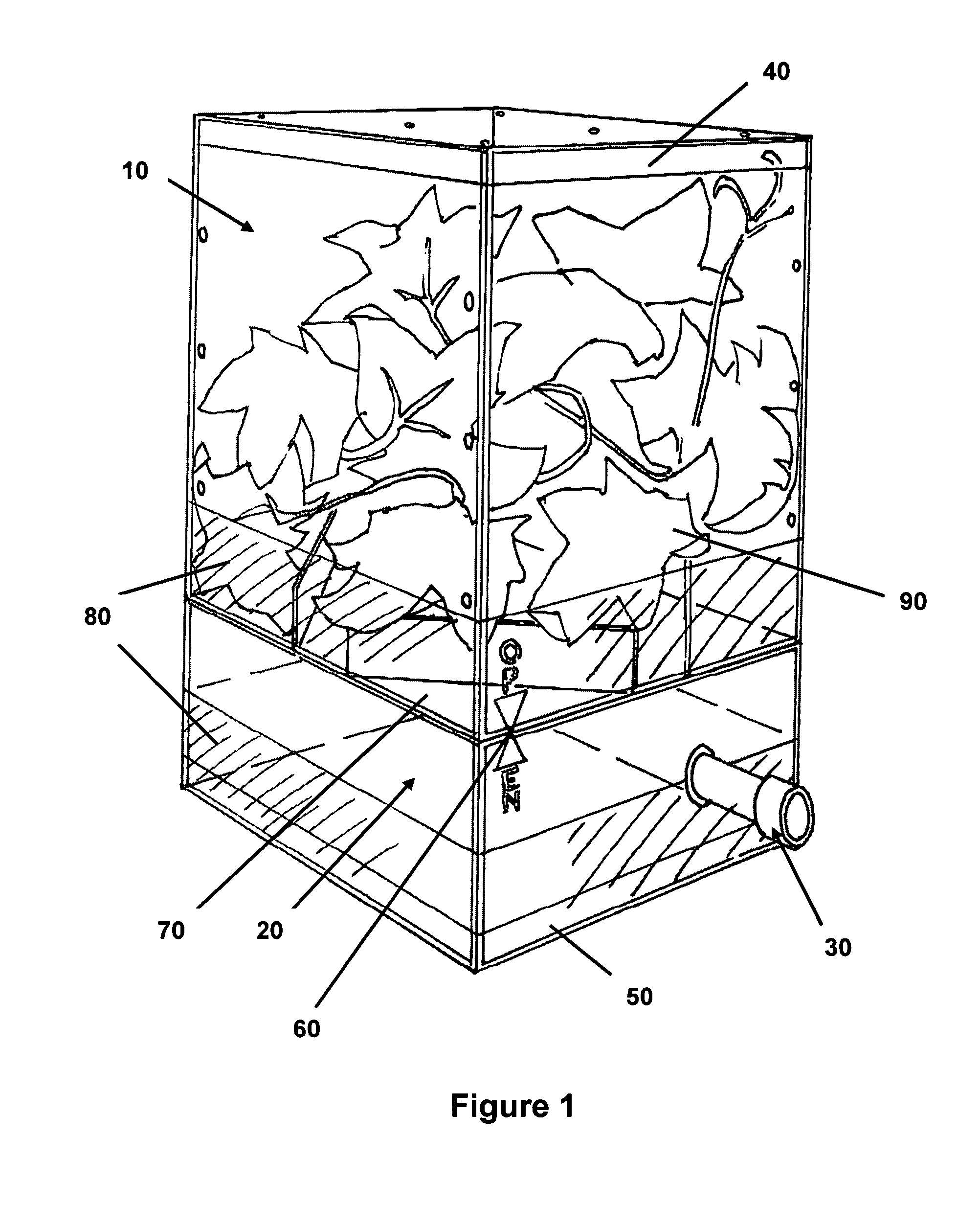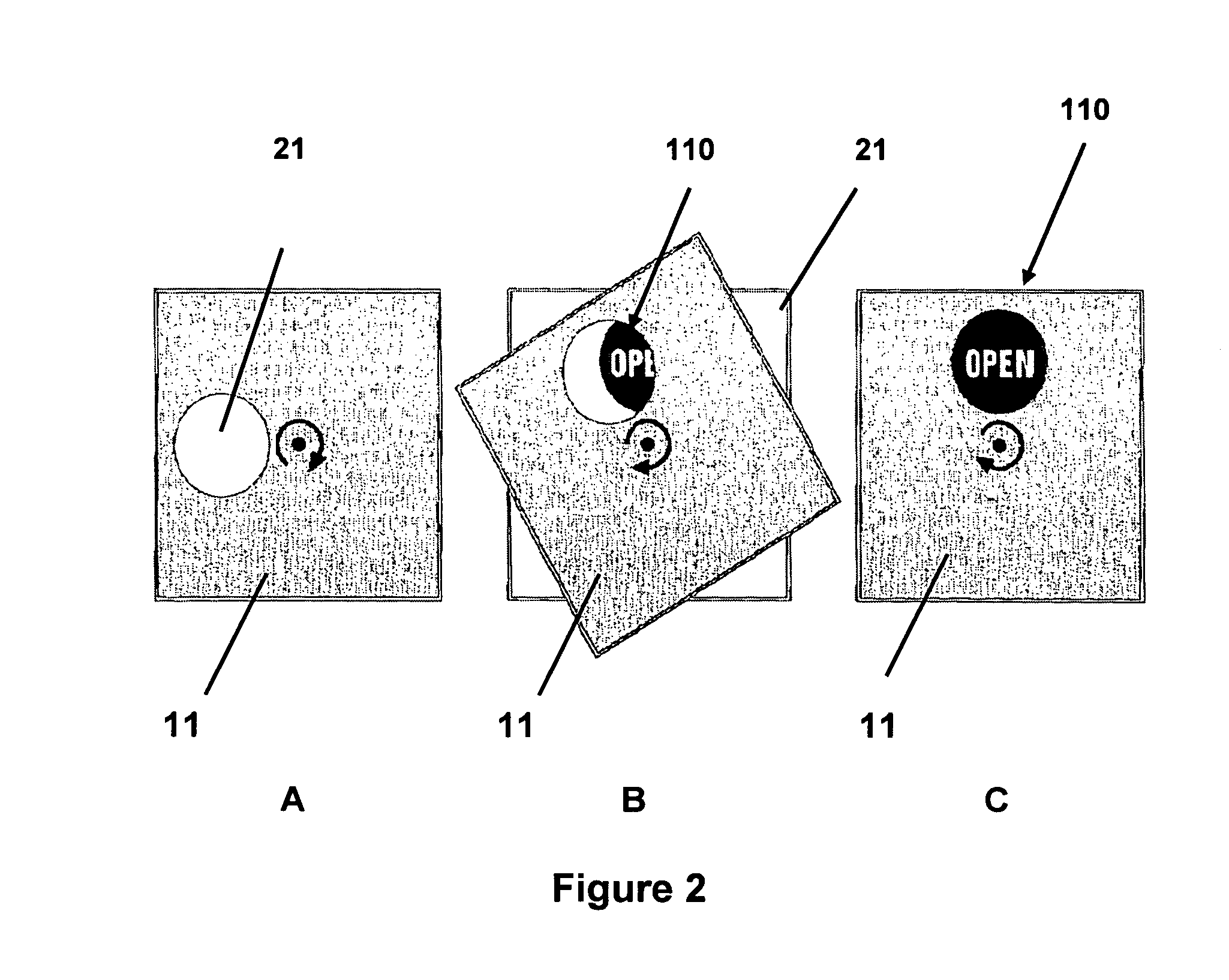[0004]The present invention provides a device that minimizes the need for the handling or pouring of crickets that, often times, provides the opportunity for their unintended escape. The present invention provides a device that lessens the requirement or the potential need to touch the crickets once they are loaded into the device. The present invention eliminates the need to pour or transfer crickets between storage and preparation containers. In addition, the present invention provides the ability to control the number of crickets prepared and released for feeding to the cricket-eating pet.
[0006]Additional features of alternative embodiments of the device of the present invention may include receptacles for holding food and / or water for the crickets contained in the Tower portion. Another option provides a debris shield surrounding at least a portion of a perimeter of an aperture in either the first compartment or the second compartment. The debris shield may comprise a raised portion that prevents the transport of insect droppings, food, or other debris from falling through the passage and into another compartment while a device of the present invention is in an open condition. Another option provides a translucent or a visually obscuring shield that discourages or prevents a pet from pecking or
biting the device of the present invention caused by seeing the crickets contained in the device. Another option of the present invention provides a substrate comprised of a
leafy material or vines that makes for a suitable environment with climbing surfaces and hiding places for the crickets contained in the device. In addition, the present invention may have removable lids to facilitate the introduction of crickets, food, water, or nutritional dust to a compartment and / or for cleaning of the device.
[0008]An embodiment of the feeder tube of the present invention is placed through a complementary sized opening in the Dusting Chamber. It is preferred that the feeder tube should be sufficiently sized to provide an outlet from the Dusting Chamber for at least one insect to leave the device of the present invention through an exit hole. An alternative embodiment of the feeder tube is slidably connected to the complementary sized opening in the Dusting Chamber. In this embodiment, the feeder tube can be retracted or extended from the Dusting Chamber as needed to allow the release of insects from the device. An alternative embodiment of the feeder tube of the present invention provides for an egress for crickets from the device that potentially lessens the likelihood of damage to a cricket-eating pet. For example, once a reptile becomes accustomed to the location where the crickets exit the device, the reptiles will attempt to peck inside the device and potentially damage their
skin on the edges or ridges of the exit hole. By orienting the exit hole of the feeder tube downward, the feeder tube allows the crickets to exit the device and minimizing the risk to the reptile.
[0009]An alternative embodiment of a feeder tube of the present invention is comprised of a tube; a closed end approximately on an end of the tube; a tube stop approximately on an end of the tube that is opposite the closed end; and an exit hole located on a portion of the longitudinal length of the tube. In this embodiment, the tube stop is attached to the tube so that the tube stop is prevented or discouraged (by requiring use of excessive force) from passage through the complementary sized opening in the Dusting Chamber, thusly resulting in separation of the feeder tube from the device. In addition, the closed end of the feeder tube, when retracted into the Dusting Chamber, provides a closed compartment that discourages an undesired loss of nutritional dust when the crickets contained therein are being coated prior to a feeding event.
[0010]As described above, the device of the present condition is in an open condition when at least a portion of the apertures between the compartments are aligned to provide sufficient space for a passage of an insect between the compartments. Conversely, the device is in a closed position when the apertures are unaligned. The unaligned apertures do not provide a passage sufficiently sized for an insect to move between the compartments. Alternative embodiments of the present invention may include a visual indicator of the device being in an open or closed condition. Such an indicator may be a simple alignment of arrows, pointers, or some other marker on the respective first and second compartments. An alignment of the marks may indicate an open condition. An alignment of the marks may indicate a closed condition. Moreover, the same device may have a set of marks to indicate an open condition and a separate set of marks to indicate a closed condition. In addition, an alternative embodiment of the present invention provides for the exterior shape of at least one of the compartments to be visually distinguishable between an open condition and a closed condition for the device of the present invention. For example, a compartment may be rectangular so that when a device is in an open condition, the longer side of the rectangle may be oriented in a particular direction. Alternatively, both compartments of an embodiment of the present invention may combine to make a complementary shape that gives a clear visual indicator of a device in an open or a closed condition. The shapes may be geometric or comprised of three dimensional shapes such as a cricket or a reptile.
 Login to View More
Login to View More  Login to View More
Login to View More 


